Wander through ancient gardens and vibrant parks adorned with delicate pink blooms, as the air fills with the sweet scent of sakura. From the iconic streets of Kyoto to the serene paths of Kanazawa, each destination offers a unique perspective on this timeless tradition. Join locals and visitors alike in hanami, the cherished tradition of picnicking beneath the blossoms, as laughter and joy ripple through the atmosphere.
As the daylight fades, witness the blossoms take on a mystical aura under the soft glow of lanterns, creating a scene straight out of a fairytale. Immerse yourself in the ethereal beauty of Japan’s cherry blossoms with our ultimate guide. Let this guide lead you on an unforgettable journey through Japan’s cherry blossom season, where every moment is infused with magic and wonder.
A brief overview of the significance of Cherry Blossoms in Japanese culture
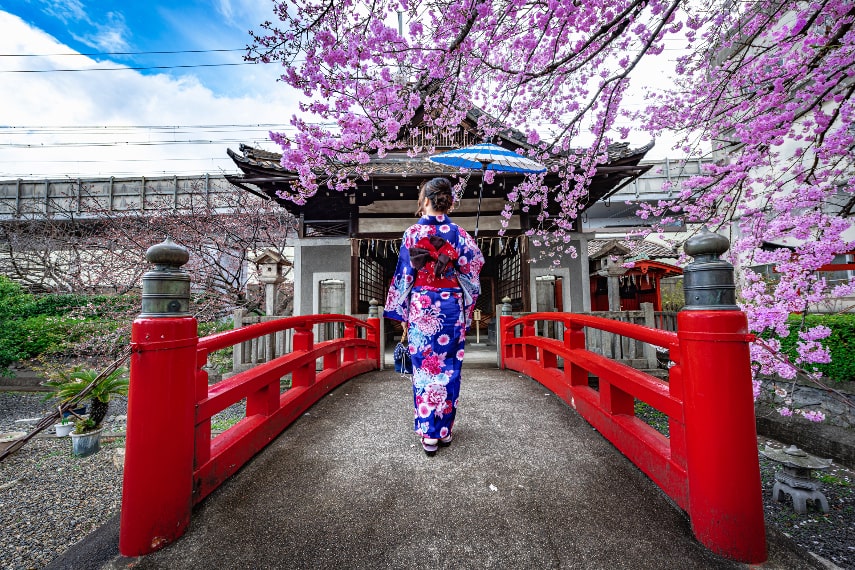
Cherry blossoms, or “sakura,” hold profound significance in Japanese culture, symbolising the ephemeral nature of life, beauty, and the transient nature of existence. Their fleeting bloom, lasting only a few weeks each spring, parallels the fleeting moments of human life, reminding people to appreciate the present and embrace impermanence. The tradition of hanami, or flower viewing, brings communities together to celebrate the arrival of spring and the beauty of the blossoms.
This centuries-old practice involves picnics, gatherings, and contemplation beneath the cherry trees, fostering a sense of unity and appreciation for nature’s splendour. Additionally, cherry blossoms are often depicted in literature, art, and poetry, serving as a poignant metaphor for life’s fragility and the cyclical nature of time.
History of Cherry Blossoms
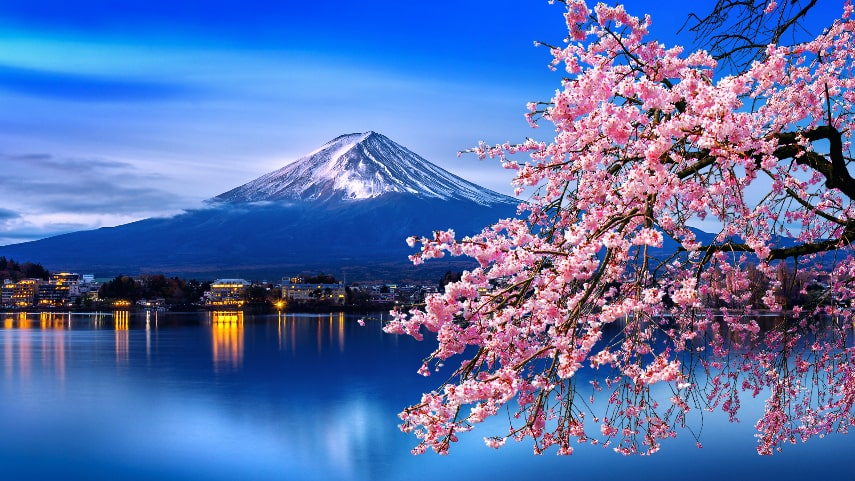
The cherry blossoms are very important in Japanese history. Or we can say that it has a rich history in Japan, dating back centuries. The tradition of cherry blossom viewing, or hanami, is believed to have originated in the Nara period (710-794) when aristocrats admired the blossoms’ beauty. Over time, cherry blossoms became intertwined with cultural, religious, and political significance. Samurai revered them as symbols of bravery and mortality, while Buddhists saw them as representations of the transient nature of life. During the Edo period (1603-1868), the Tokugawa shogunate popularised hanami among the common people. Today, cherry blossoms remain a cherished emblem of Japanese identity, celebrated annually during the Sakura season, attracting millions of visitors from around the world to witness their brief yet breathtaking bloom.
Meaning and Symbol of Cherry Blossoms
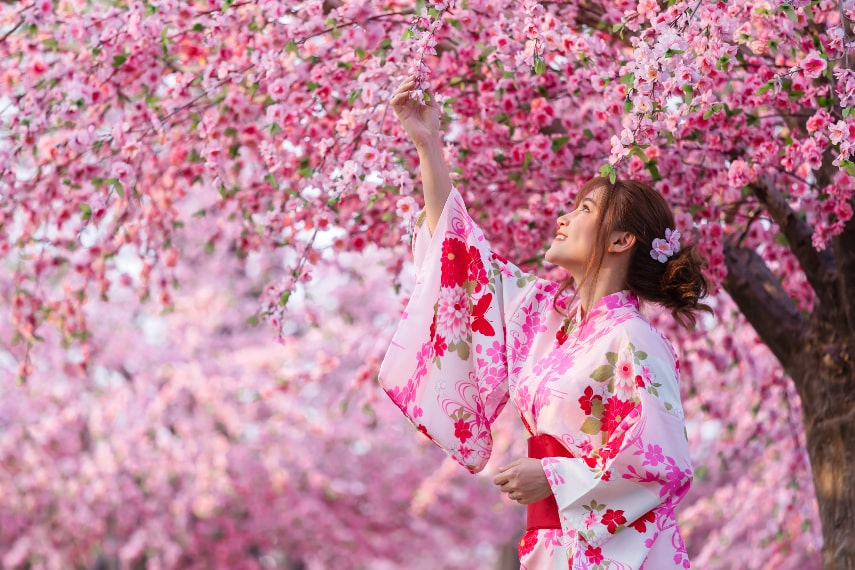
When it comes to understanding the meaning of Cherry blossoms you must know a few more things about it. Also known as “sakura” in Japanese, embody a profound symbolism that resonates deeply within Japanese culture and beyond. Revered for their fleeting yet breathtaking beauty, they symbolise the transient nature of life itself, serving as a poignant reminder to cherish every moment and appreciate the present. The blossoms also evoke themes of renewal, hope, and the arrival of spring, marking a time of new beginnings and fresh starts.
In Japanese art, literature, and poetry, cherry blossoms often represent purity, grace, and the ephemeral beauty of youth. Additionally, they hold significance in Japanese history, where they’ve been associated with concepts of love, honour, and the samurai’s code of bushido. As such, cherry blossoms continue to captivate hearts worldwide, their delicate petals inspiring contemplation, appreciation, and a profound connection to the natural world.
Why are Cherry Blossoms Famous in Japan?
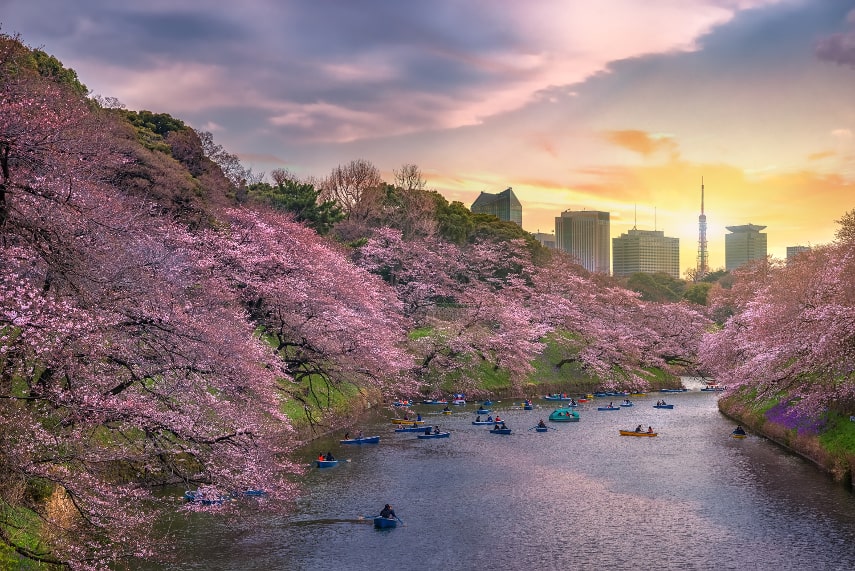
Cherry blossoms are renowned in Japan for their enchanting beauty and profound cultural significance, captivating hearts and minds across generations. Beyond their aesthetic appeal, these delicate blooms, known as “sakura,” hold a special place in the Japanese psyche as symbols of the ephemeral nature of life and the transient beauty of existence. Each spring, the nation eagerly anticipates the arrival of Sakura season, a time when parks, streets, and countryside landscapes are transformed into ethereal pink wonderlands.
The tradition of hanami, or flower viewing, brings communities together in joyful celebration beneath the blossoms, fostering a sense of unity and appreciation for nature’s gifts. Moreover, cherry blossoms feature prominently in art, literature, and folklore, perpetuating their enduring fame and cultural significance, making them an integral part of Japan’s identity and global allure.
Best time to see Cherry Blossoms in Japan
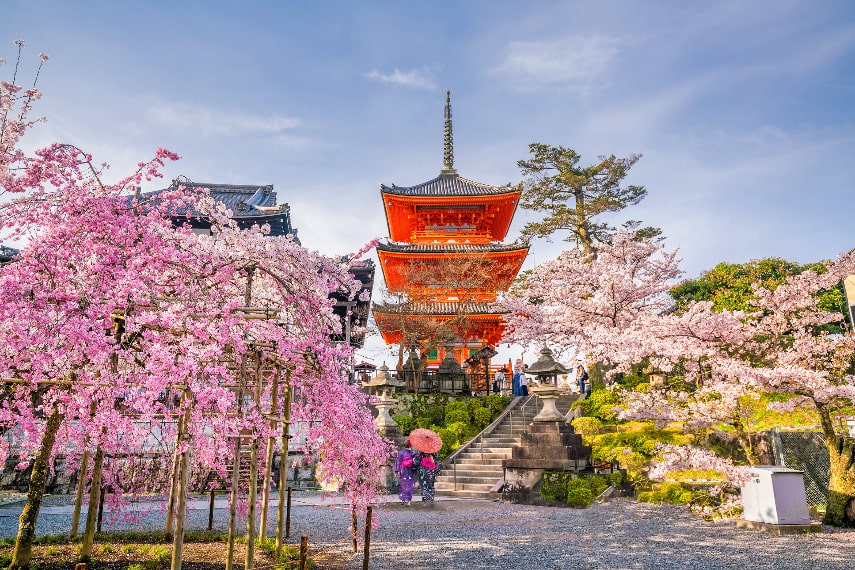
Timing is everything when it comes to experiencing the breathtaking beauty of cherry blossoms in Japan. Typically, the Sakura season begins in late March to early April, heralding the arrival of spring across the country. However, the precise timing varies depending on factors such as location, altitude, and climate conditions. In southern regions like Okinawa, cherry blossoms may bloom as early as January, while in northern areas like Hokkaido, they may not peak until late April or early May.
To catch these delicate blooms at their finest, you will have to keep a close eye on reports of the “Japan Meteorological Corporation” or cherry blossom forecasts, known as “Sakura-Zensen.” They predict the progression of blooms across Japan. Whether you’re strolling through bustling city streets or serene countryside landscapes, witnessing the fleeting beauty of cherry blossoms is an experience not to be missed.
Know about the Cherry Blossom Festival in Japan
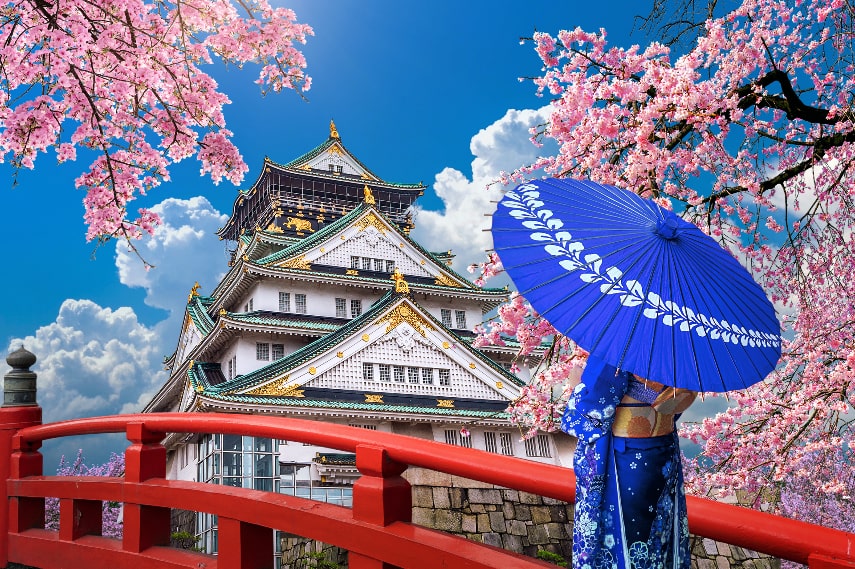
The Cherry Blossom Festival, or “Sakura Matsuri,” is a cherished tradition in Japan that celebrates the arrival of spring and the stunning beauty of cherry blossoms. Held across the country from late March to early May, this vibrant festival features a variety of events and activities. Locals and visitors alike gather in parks, gardens, and along riverbanks to indulge in the practice of hanami, or flower viewing, picnicking beneath the blooming trees.
Many cities host parades, concerts, and fireworks displays, adding to the festive atmosphere. Traditional performances, such as tea ceremonies and taiko drumming, provide cultural enrichment, while food stalls offer a tantalising array of seasonal treats. The Cherry Blossom Festival serves as a joyful reminder of the fleeting beauty of nature and the importance of cherishing each precious moment.
Full Dates for Cherry Blossom in Japan in 2025
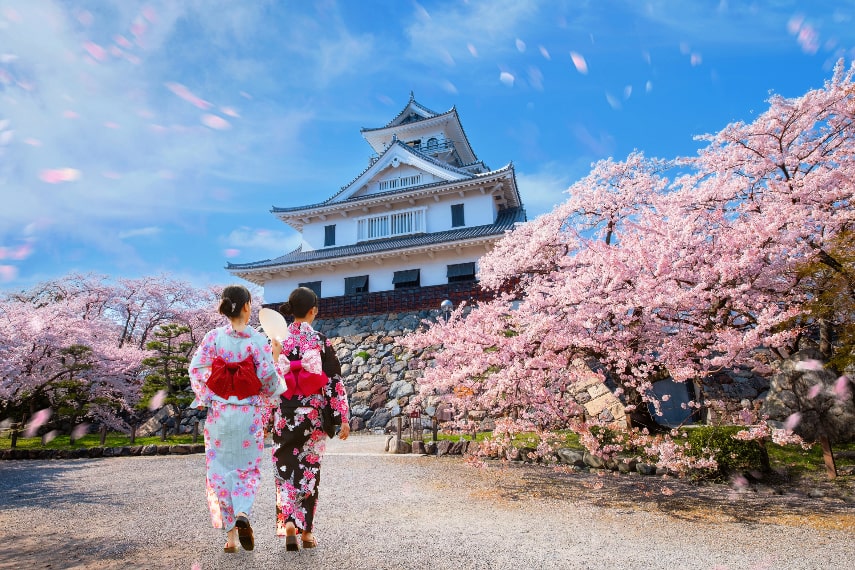
In 2025, the cherry blossom season in Japan is expected to unfold its ethereal beauty across the country. While exact dates vary depending on region and weather conditions, the blooming period typically begins in late March and continues into early April for most areas, with some regions experiencing peak bloom slightly earlier or later. Cities like Tokyo, Kyoto, and Osaka are popular destinations for experiencing the full splendour of the Sakura season, attracting crowds of locals and tourists alike. Whether wandering through urban parks or exploring rural countryside, witnessing the delicate pink petals of cherry blossoms is a quintessential Japanese experience not to be missed.
| Destination | First Bloom | Full Bloom |
| Kochi | March 17 | March 25 |
| Kumamoto | March 19 | March 28 |
| Hiroshima | March 26 | April 3 |
| Kyoto | March 26 | April 4 |
| Nagoya | March 24 | April 1 |
| Kanazawa | March 31 | April 6 |
| Tokyo | March 19 | March 26 |
| Matsumoto | April 2 | April 11 |
| Fuji Five Lakes | April 2 | April 10 |
| Sendai | March 31 | April 6 |
| Hirosaki | April 20 | April 26 |
| Hakodate | April 26 | May 3 |
12 Popular Foods to Enjoy at Cherry Blossom Viewing (Hanami)
At cherry blossom viewings, known as hanami, indulging in delectable seasonal treats is an essential part of the experience. Traditional Japanese favourites such as onigiri (rice balls), yakitori (grilled skewered chicken), and tempura showcase the simplicity and freshness of spring ingredients. Street vendors and food stalls offer an array of tantalising options, including savoury okonomiyaki (Japanese savoury pancakes) and takoyaki (octopus balls), along with sweet treats like sakura mochi (cherry blossom rice cakes) and teriyaki (fish-shaped pastries filled with sweet red bean paste). These culinary delights add to the festive ambience, enhancing the joy of celebrating beneath the blooming cherry trees.
How many types of Cherry Blossoms are there in Japan?
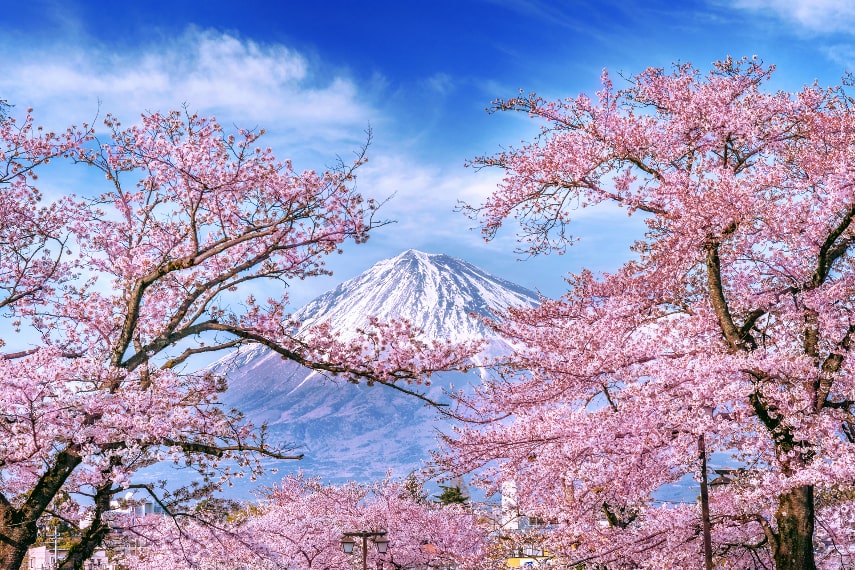
In Japan, there are over 200 cultivars of cherry blossoms, each possessing its own unique characteristics and beauty. These cultivars, known as “sakura” in Japanese, vary in colour, size, and shape of their blossoms, offering a diverse array of options for cherry blossom enthusiasts to admire during hanami season. Some of the most popular types include the iconic Somei Yoshino, with its delicate white petals tinged with pale pink; the vibrant and double-flowered Yaezakura; and the elegant and weeping Shidarezakura. Other notable cultivars include the blush-pink Kanzan, the deep pink Fugenzo, and the pale pink Ukon. These diverse varieties ensure that Japan’s cherry blossom season is a kaleidoscope of colours and textures, enchanting visitors from around the world.
Cherry Blossom Forecast 2025
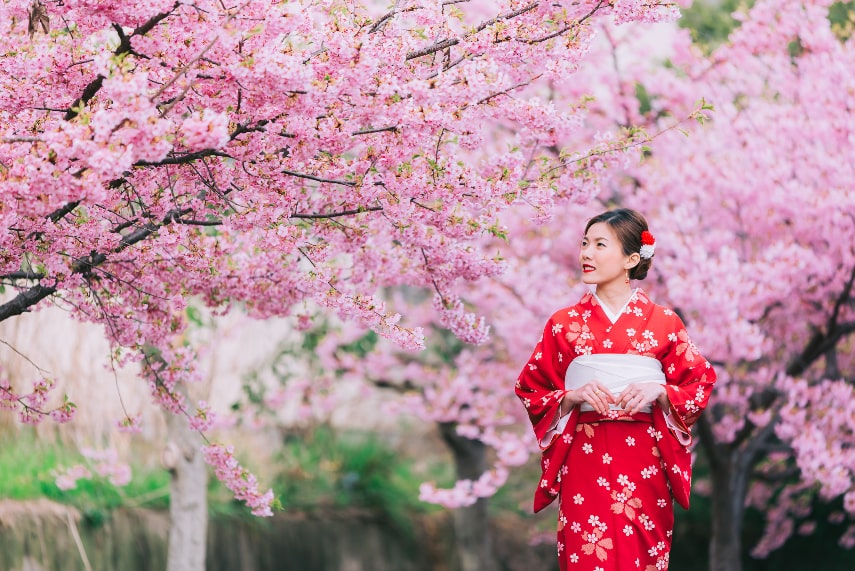
Keeping an account of the cherry blossom forecast is very important indeed and while you are planning to be a part of this, do not overlook this section. You will get a lot of crucial information here. So while iterating your trip, just keep these facts in mind.
| Major cities | Estimated Best view dates |
| Tokyo | March 24 to March 31 |
| Sapporo | May 1 to May 5 |
| Sendai | April 7 to April 13 |
| Kanazawa | April 2 to April 8 |
| Nagoya | March 24 to April 3 |
| Kyoto | March 27 to April 4 |
| Osaka | March 27 to April 3 |
| Hiroshima | March 24 to April 3 |
| Fukuoka | March 22 to March 31 |
| Kagoshima | March 22 to April 2 |
| Kochi | March 22 to March 29 |
Best places to see Cherry Blossoms in Japan
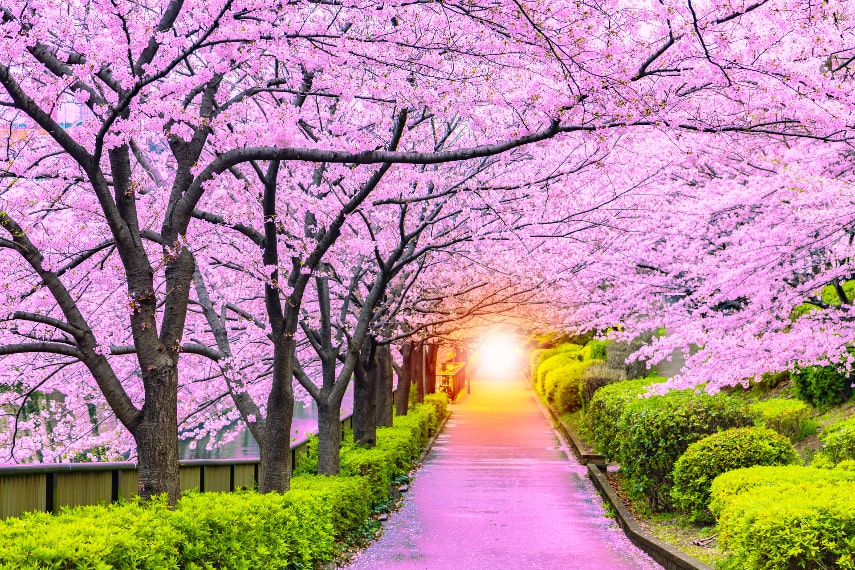
While you try jotting down the points for your trip to Japan to enjoy the cherry blossoms; here are some amazing spots that you would want to be at. These places are going to give you the perfect shot for your camera roll and quite a memorable time during your trip. So while you meticulously design your itinerary make sure to include these places to enjoy the best of cherry blossoms in Japan 2025.
- Chidorigafuchi (Tokyo)
- Nakameguro River Park (Tokyo)
- Philosopher’s Path (Kyoto)
- Osaka Castle Park (Osaka)
- Lake Kawaguchiko or Fuji Five Lakes (Yamanashi)
- Hirosaki Castle (Aomori)
- Himeji Castle (Hyogo)
- Mitsuike Koen (Kanagawa)
- Mount Yoshinoyama (Nara)
- Nijukken Road (Hokkaido
Want to book a holiday to see the cherry blossom?
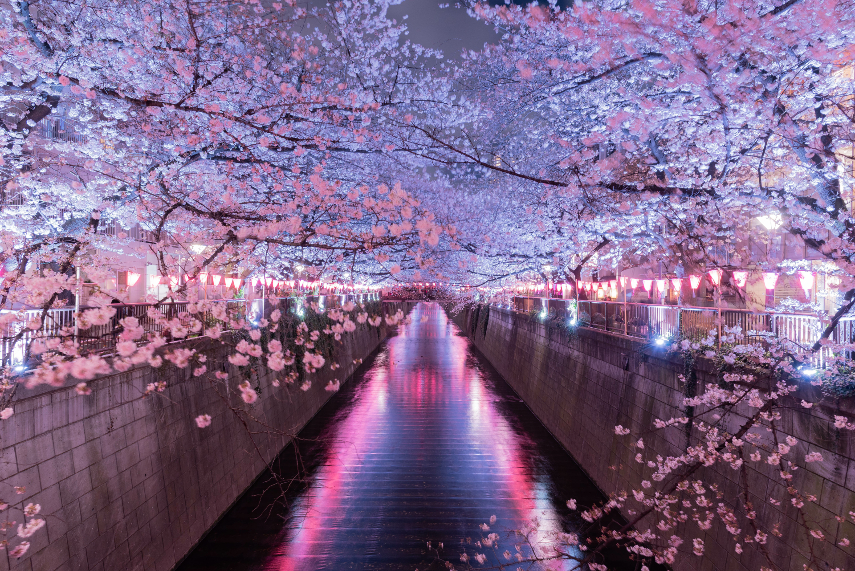
If you are stuck with a lot of doubts and are unable to decide when you should visit Japan for the best cherry blossom, then we have something for you. Getting your holidays booked with Affordable Luxury Travel can give you direct access to comfort and expert advice. Although our pre-designed holiday packages are meticulously curated by our travel experts, if you still wish to make some changes, you can connect with them. To get your bookings done, either give us a ring on “The Number” or request a callback. You can visit our website or send us an email with your query.
Cherry Blossom Photography Tips
Cherry blossoms are a timeless symbol of beauty, renewal, and the ephemeral nature of life. Capturing their delicate essence through photography can be a rewarding endeavour, but it requires some know-how to truly do justice to their splendour. Here are some tips to help you enhance your cherry blossom photography:
- Keep an eye on the weather and local forecasts to anticipate when the cherry blossoms will be in full bloom. Typically, this occurs in spring, but it can vary depending on the location and climate.
- The soft, warm light during these times can add a magical quality to your photos. Avoid harsh midday sunlight, as it can create unflattering shadows and wash out the delicate hues of the blossoms.
- Experiment with different angles and perspectives to find the most captivating composition. Consider including other elements such as water, bridges, or buildings to add depth and interest to your shots.
- Especially if you’re shooting in low light conditions or using slower shutter speeds, a tripod can help ensure sharp, blur-free images.
- Don’t just focus on capturing the entire tree; zoom in on individual blossoms or clusters to highlight their intricate details and textures.
- Experiment with aperture settings to control the depth of field. A shallow depth of field (low f-stop number) can create a dreamy, blurred background, while a deeper depth of field (higher f-stop number) can keep more of the scene in focus.
- Adding people to your photos can provide a sense of scale and perspective, helping viewers appreciate the size and beauty of the cherry blossoms.
- Spend time observing the cherry blossoms and the surrounding environment before you start shooting. Look for unique angles, interesting compositions, and moments of natural beauty.
- Use editing software to fine-tune your photos, adjusting exposure, contrast, and colours to bring out the full beauty of the cherry blossoms.
- When photographing cherry blossoms, be mindful of your surroundings and the delicate nature of the trees. Avoid trampling on flowers or disturbing wildlife, and follow any guidelines or regulations set by park authorities.
5 facts about Japanese cherry blossom
Cherry blossoms, or Sakura in Japanese, hold a special place in Japanese culture, symbolising beauty, transience, and renewal. These delicate flowers bloom in spring, typically between March and April, transforming landscapes into breathtaking vistas of pink and white. Here are five fascinating facts about Japanese cherry blossoms:
- There are over 200 different varieties of cherry trees in Japan, with each producing blossoms of varying colours, sizes, and shapes. Some popular varieties include Somei Yoshino, which has five-petaled flowers and is widely seen in parks and streets, and the double-flowered Kanzan, known for its lush and full blooms.
- Hanami, meaning “flower viewing,” is a centuries-old tradition in Japan where people gather with friends and family under cherry blossom trees to enjoy picnics, drinks, and festivities. It’s a cherished custom that celebrates the fleeting beauty of the blossoms and the arrival of spring.
- Cherry blossoms hold deep cultural significance in Japan, symbolising the ephemeral nature of life and the beauty of fleeting moments. This symbolism is reflected in various art forms, literature, and even modern-day popular culture, where sakura motifs are prevalent.
- The concept of mono not aware, or the pathos of things is deeply associated with cherry blossoms. It refers to an awareness of the impermanence of life and the bittersweet emotions evoked by transient beauty, a sentiment often inspired by the brief blooming of sakura.
- The timing of cherry blossom blooming is closely monitored and predicted by meteorologists and local authorities. Forecasts are made weeks in advance, allowing people to plan hanami gatherings and events. Factors such as temperature, rainfall, and sunlight influence the blooming period, making it a subject of keen interest and anticipation across Japan.
Read Also: Best time to visit Japan | Things to do in Japan
Places to visit in Japan in 2025
FAQs of Cherry Blossoms in Japan
Nestled within the serene confines of the revered Jissō-ji Temple in the ancient city of Kyoto, Japan stands a botanical treasure steeped in history—the legendary Taki-zakura, or “waterfall cherry tree.” Believed to be over 1,200 years old, this majestic sakura tree exudes an air of timeless wisdom and tranquillity, its gnarled branches adorned with delicate pink blossoms cascading like a gentle waterfall. Each spring, pilgrims and nature enthusiasts flock to witness this ancient marvel in full bloom, a testament to the enduring beauty and resilience of nature. The Taki-zakura stands as a living testament to the passage of time, inspiring awe and reverence in all who behold its splendour.
The cherry blossom stands as an iconic symbol of Japan, deeply embedded in the nation’s cultural fabric and collective consciousness. Its significance lies not only in its breathtaking beauty but also in the profound symbolism it embodies. Representing the transient nature of life, the cherry blossom serves as a poignant reminder to cherish the fleeting moments of existence. Furthermore, its annual bloom heralds the arrival of spring, symbolising renewal, hope, and the promise of new beginnings. With its delicate yet resilient nature, the cherry blossom reflects the spirit of resilience and perseverance that characterises the Japanese people, making it an enduring emblem of the nation’s identity.
Cherry blossoms, with their delicate and ephemeral beauty, originated in the majestic landscapes of Asia, specifically in the ancient land of China. Revered for centuries in Chinese culture for their symbolic significance, cherry blossoms became intertwined with themes of renewal, beauty, and the transient nature of life. As trade and cultural exchanges flourished along the Silk Road, these enchanting blooms gradually made their way to neighbouring countries, including Japan and Korea, where they further cemented their status as beloved symbols of springtime and renewal. Today, the cherry blossom continues to captivate hearts worldwide, transcending borders and cultures with its timeless allure.


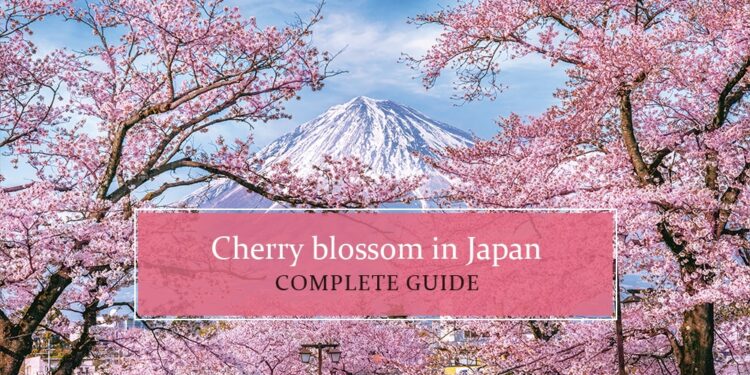









 ATOL certificate
ATOL certificate









